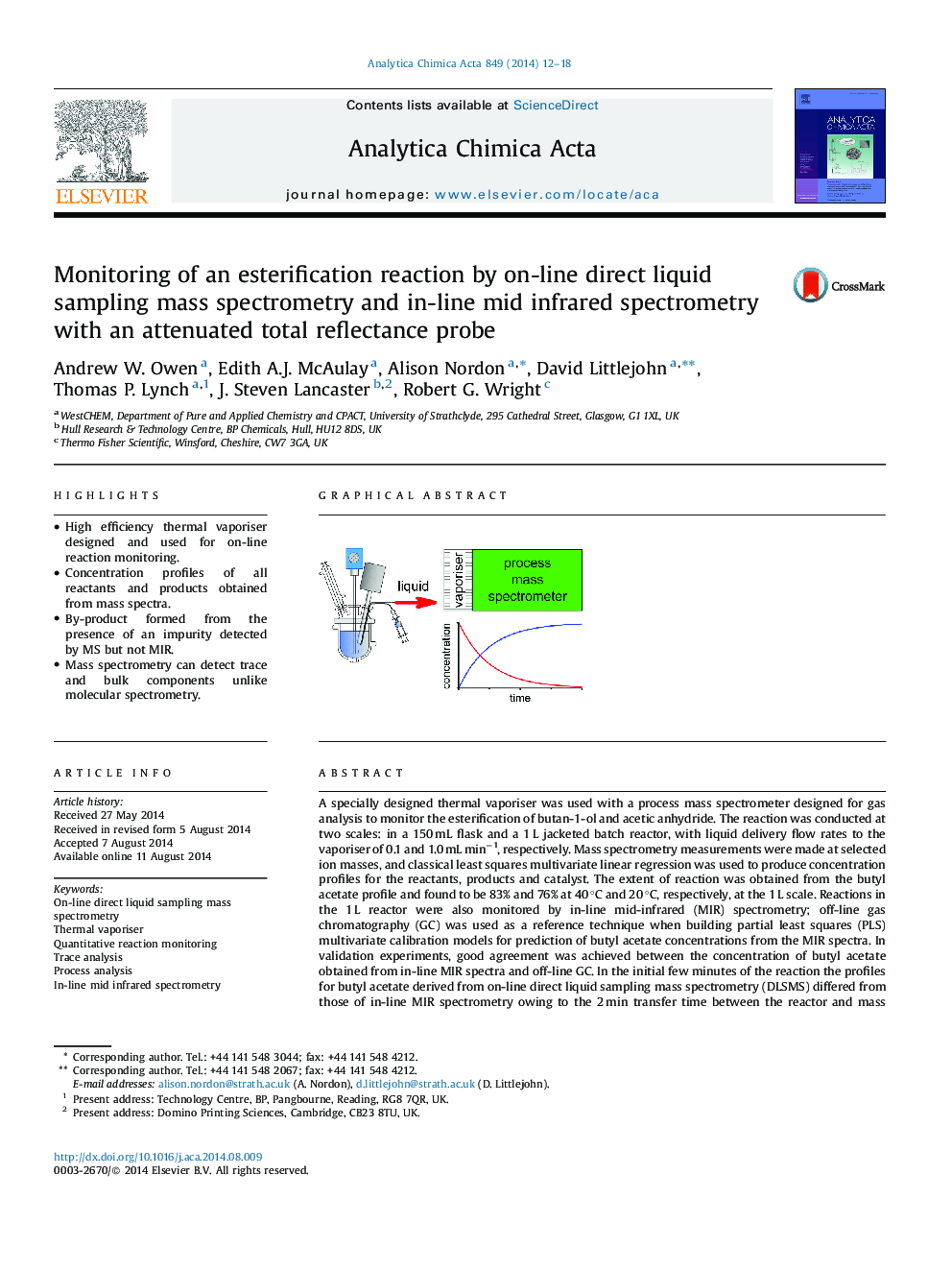| Article ID | Journal | Published Year | Pages | File Type |
|---|---|---|---|---|
| 1164242 | Analytica Chimica Acta | 2014 | 7 Pages |
•High efficiency thermal vaporiser designed and used for on-line reaction monitoring.•Concentration profiles of all reactants and products obtained from mass spectra.•By-product formed from the presence of an impurity detected by MS but not MIR.•Mass spectrometry can detect trace and bulk components unlike molecular spectrometry.
A specially designed thermal vaporiser was used with a process mass spectrometer designed for gas analysis to monitor the esterification of butan-1-ol and acetic anhydride. The reaction was conducted at two scales: in a 150 mL flask and a 1 L jacketed batch reactor, with liquid delivery flow rates to the vaporiser of 0.1 and 1.0 mL min−1, respectively. Mass spectrometry measurements were made at selected ion masses, and classical least squares multivariate linear regression was used to produce concentration profiles for the reactants, products and catalyst. The extent of reaction was obtained from the butyl acetate profile and found to be 83% and 76% at 40 °C and 20 °C, respectively, at the 1 L scale. Reactions in the 1 L reactor were also monitored by in-line mid-infrared (MIR) spectrometry; off-line gas chromatography (GC) was used as a reference technique when building partial least squares (PLS) multivariate calibration models for prediction of butyl acetate concentrations from the MIR spectra. In validation experiments, good agreement was achieved between the concentration of butyl acetate obtained from in-line MIR spectra and off-line GC. In the initial few minutes of the reaction the profiles for butyl acetate derived from on-line direct liquid sampling mass spectrometry (DLSMS) differed from those of in-line MIR spectrometry owing to the 2 min transfer time between the reactor and mass spectrometer. As the reaction proceeded, however, the difference between the concentration profiles became less noticeable. DLSMS had advantages over in-line MIR spectrometry as it was easier to generate concentration profiles for all the components in the reaction. Also, it was possible to detect the presence of a simulated impurity of ethanol (at levels of 2.6 and 9.1% mol/mol) in butan-1-ol, and the resulting production of ethyl acetate, by DLSMS, but not by in-line MIR spectrometry.
Graphical abstractFigure optionsDownload full-size imageDownload as PowerPoint slide
